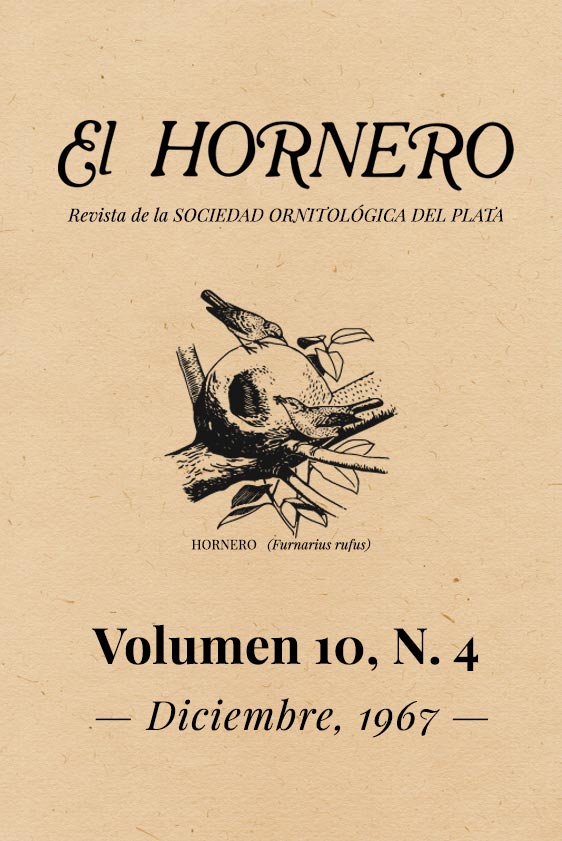Abstract
Widely distributed in northern South America, the Oriole Blackbird inhabits open country with scattered trees, over which it flies in small, loose flocks. It rests in the treetops but forages chiefly on the ground, over which it walks with alternately advancing feet, gathering insects, caterpillars, worms, small frogs, and the like. It also plucks small fruit from trees. Its song is screechy or scratchy, and no melodious utterances were heard. In early June, a pair started a nest amid the bases of the leaf stalks of a tallyagua palm growing in open pasture. The materials were gathered from the ground, chiefly by the female, with the male helping occasionally. Building continued for at least 10 days. The nest was a loosely constructed open bowl, composed largely of the black, curving rachises of the compound leaves of an acacia-like tree, on a foundation of long, coarse straw and smaller fragments of vegetation. The female laid three light blue eggs, marked with irregular blotches and speckles of black and lilac. She alone incubated, sitting from a quarter hour to nearly two hours continuously and covering her eggs for 65 percent of the daytime. Her mate was attentive, escorting her back to the nest tree, perching nearby while she incubated, and from time to time visiting the nest. The nestlings hatched with sparse but long, gray down; and the interior of their mouths was purplish red. Both parents fed them, carrying the food visibly in their bills. Larger items, such as small frogs, were brought singly, but several worms or caterpillars were often carried together. When trespassing Oriole Blackbirds perched near the nest tree, the parents protested mildly or not at all. This species is at most weakly territorial. Although in its golden and black plumage the Oriole Blackbird resembles the orioles of the genus Icterus, in voice, mode of foraging, and nidification it more closely resembles the blackbirds and grackles (Quiscalus, Cassidix, etc.).
References
Phelps, W. 1965. Avifauna Venezolana. Caracas, Banco Central de Venezuela. 130 láminas con texto.
Cherrie, G.K. 1916. A contribution to the ornithology of the Orinoco region. Bulletin of the Brooklyn Institute of Arts and Sciences, 2: 133a–374.
Phelps, W.H. & Phelps, W.H. Jr. 1963. Lista de las aves de Venezuela con su distribución. 1ª parte: Passeriformes. Segunda edición. Boletín de la Sociedad Venezolana de Ciencias Naturales, 24: 1–479.
Skutch, A.F. 1948. Anting by some Costa Rican birds. Wilson Bulletin, 60: 115–117.

This work is licensed under a Creative Commons Attribution-NonCommercial 4.0 International License.





